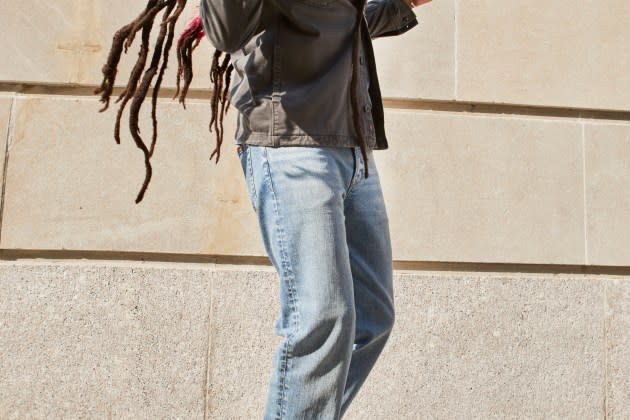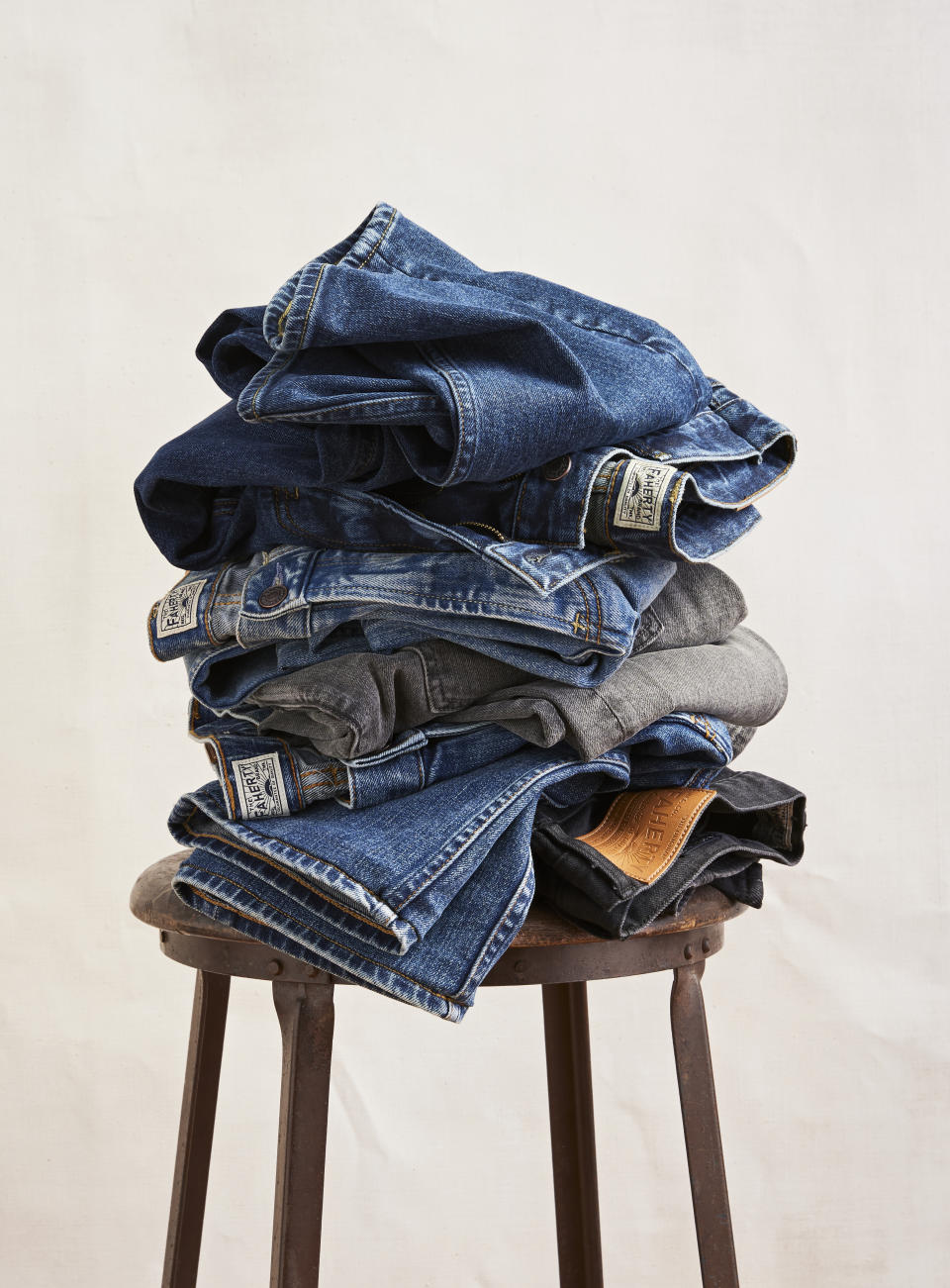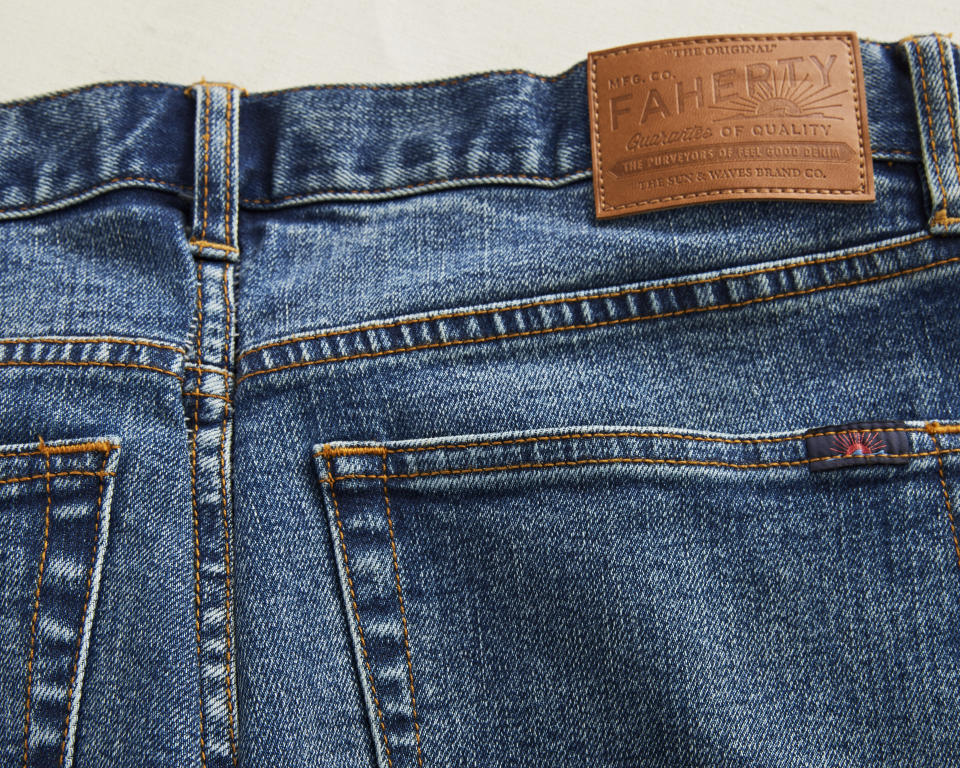Faherty to Launch Denim Collection After 10 Years of Research and Development

Take your time, do it right. That could be the mantra for Faherty’s latest category expansion — jeans.
The Faherty brand was founded 10 years ago by twin brothers Alex and Mike Faherty as a sustainably sourced East Coast alternative to West Coast surf brands. Their collection of sportswear with a muted color palette quickly caught on, and the company, which launched with a pair of men’s board shorts, has annual volume of more than $200 million, operates more than 50 of its own retail stores and offers a wide range of womenswear, kids’ and home products.
More from WWD
What Erewhon and Muji Have in Common With Denim Sourcing: Short Takes
AG Denim Brand Names Glenn McMahon as Its First Chief Executive Officer
While the brand offers a far-reaching assortment of shorts, shirts, pants, hoodies, blazers, sweaters and outerwear, what it does not sell is jeans. But that will change on Aug. 23 when the first full-fledged denim collection debuts.
The reason for the delay lies squarely with Mike Faherty, chief creative officer, who majored in fashion design at Washington University in St. Louis and worked for Ralph Lauren before starting the Faherty business. He has been working on creating what he believes is the perfect jean for a decade and didn’t want to enter the category until he was convinced that it was spot-on.

“We’ve dabbled in denim over the years, but we kept holding off on creating a collection because we never felt it was ready,” he said. “We didn’t think you should launch something if it doesn’t fit and the fabric is not right. And it’s not an easy business to get into. So we’ve been patient.”
He said the company “rode the men’s five-pocket craze,” but Faherty’s version was a cavalry twill it has sold for nine years. Then more recently, it moved into stretch terry, a model that looks like a traditional jean but fits more like a sweatpant. That has become the brand’s number-one selling men’s pant and it’s offered in a variety of styles including indigo. “It looks like denim but it’s not,” Faherty said. “True denim was always on the horizon.”
He knew that he wanted the fabric to be made from organic cotton with a little stretch to make it comfortable. So over the past two and a half years, Faherty looked far and wide to find the right fabric, a painstaking process with lots of trial and error. But at long last, he’s convinced that he’s found the formula.
The launch collection will be created from 98 percent organic cotton and 2 percent Lycra with a vintage-inspired look and a sueded finish. “They’re the real deal — look like a pre-1960s Levi’s jean,” he said. “They have a sueded finish and the stretch is incredible. I come from Double RL, I love vintage cloth, but I don’t wear anything that’s not stretchy anymore.”

In addition to the stretch property, the jeans are manufactured with a low-impact wash process, Smart Foam, that uses less water and energy than traditional manufacturing. “You’ve got to use water to make jeans, but you can do it circularly,” he said. In addition, the labels are all made from recycled materials and the back patch is mushroom leather. The collection is made in a vertically integrated plant in South China.
The launch collection will offer a slim straight fit in five washes and three inseams for men, and four slim straight and two wide-leg washes for women. They will retail for $178 to $198 and will be sold initially at the Faherty stores with other retailers coming on board later this fall.
“We did a deep launch,” Faherty said. “We said, let’s launch with a core line first and then for spring, we’ll add a light wash and some faded options as well as a pure white in April or May.” He described the cuts as either athletic or classic/tailored.
Going forward, he said he’d like to expand into a wider leg option for men in something like a carpenter fit while also expanding the models offered for women. For spring, an herbal dyed version of a women’s jean will be introduced in a couple of colors that will be dyed using plants rather than chemicals.
And beyond that? “There are so many more opportunities — we’ll just see where the world is going,” he said.
Best of WWD

